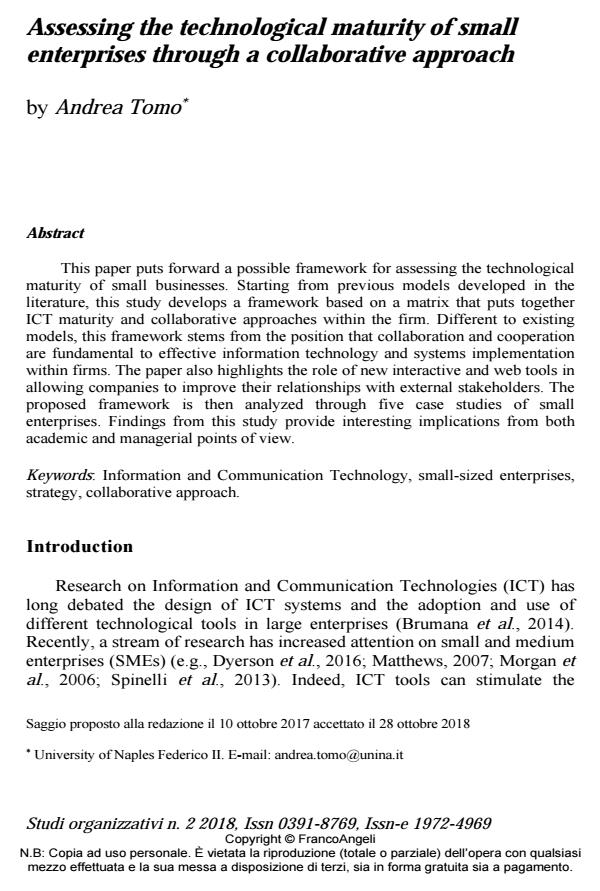Assessing the technological maturity of small enterprises through a collaborative approach
Journal title STUDI ORGANIZZATIVI
Author/s Andrea Tomo
Publishing Year 2019 Issue 2018/2
Language English Pages 28 P. 147-174 File size 250 KB
DOI 10.3280/SO2018-002007
DOI is like a bar code for intellectual property: to have more infomation
click here
Below, you can see the article first page
If you want to buy this article in PDF format, you can do it, following the instructions to buy download credits

FrancoAngeli is member of Publishers International Linking Association, Inc (PILA), a not-for-profit association which run the CrossRef service enabling links to and from online scholarly content.
This paper puts forward a possible framework for assessing the technological maturity of small businesses. Starting from previous models developed in the literature, this study develops a framework based on a matrix that puts together ICT maturity and collaborative approaches within the firm. Different to existing models, this framework stems from the position that collaboration and cooperation are fundamental to effective information technology and systems implementation within firms. The paper also highlights the role of new interactive and web tools in allowing companies to improve their relationships with external stakeholders. The proposed framework is then analyzed through five case studies of small enterprises. Findings from this study provide interesting implications from both academic and managerial points of view.
Keywords: Information and Communication Technology, small-sized enterprises, strategy, collaborative approach
Andrea Tomo, Assessing the technological maturity of small enterprises through a collaborative approach in "STUDI ORGANIZZATIVI " 2/2018, pp 147-174, DOI: 10.3280/SO2018-002007